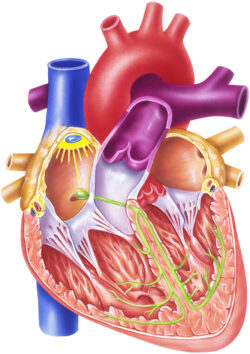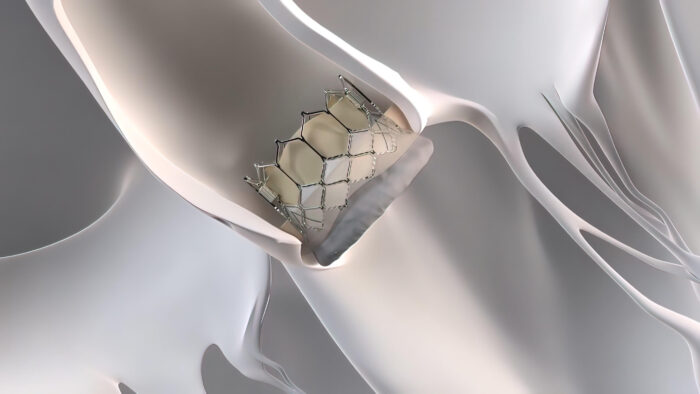Understanding Aortic Valve Stenosis and Your Treatment Options

Introduction: What is Aortic Valve Stenosis?
Aortic Valve Stenosis (AS) is a heart condition that becomes more common as we get older. It happens when the door in our heart that lets blood out (the aortic valve) gets narrow or blocked. This makes it harder for our heart to pump blood properly, which can cause various symptoms. If not treated, it can be very serious. In this article, we’ll explain what Aortic Valve Stenosis is and talk about two special treatments: keyhole heart surgery and Transcatheter Aortic Valve Implantation (TAVI).

Understanding Aortic Valve Stenosis:
The aortic valve is like a gatekeeper in your heart, making sure oxygen-rich blood gets pumped from your heart to the rest of your body. When you have Aortic Valve Stenosis, this valve gets narrow because of things like calcium buildup or scarring. As the valve gets narrower, the heart must work harder to push blood through the small space. This can cause symptoms like:
- Chest Pain: You might feel pain or discomfort in your chest, especially when you’re active.
- Shortness of Breath: It might be hard to breathe, especially when you’re moving around or lying down.
- Fatigue: Your heart must do more work, which can make you feel tired and make it harder to do everyday things.
- Fainting or Dizziness: In severe cases, you might feel like you’re going to faint or feel dizzy. This can happen because not enough blood is reaching your brain.
- Heart Murmurs: Doctors might hear strange sounds in your heart when they listen with a stethoscope. This can be a sign of Aortic Valve Stenosis.
Treatment Options for Aortic Valve Stenosis:
Medical treatment will not work in patients who develop severe symptomatic Aortic Valve Stenosis and urgent replacement of the aortic valve is required. Once you have been diagnosed, your risk of death is as high as 50% within 18 months to 2 years without surgical treatment.
The traditional way to treat Aortic Valve Stenosis is to replace the aortic valve through a cut in the breastbone. This is safe and effective. The bone does take 12 weeks to heal, and many patients do not like the idea of this operation.
Good news! There are newer, less invasive ways to treat Aortic Valve Stenosis that are very safe when performed by experts. Let’s talk about two of them:
Keyhole Heart Surgery (Minimally Invasive Surgery):
In regular heart surgery for Aortic Valve Stenosis, doctors make a big cut in your chest, stop your heart for a while, and put in a new valve. While this has worked well for a long time, it can be a big operation with a long recovery.
Keyhole heart surgery, also known as minimally invasive heart surgery, is a less invasive option. Instead of a big cut, doctors make smaller cuts, usually between your ribs, to reach your heart. They then put in a new valve through these small openings. This kind of surgery has some benefits:
- Faster Recovery: You’ll probably get better quicker compared to regular heart surgery.
- Less Pain and Scarring: Smaller cuts mean less pain and smaller scars.
- Lower Risk of Infection: With fewer and smaller cuts, there’s less chance of getting an infection.
Not everyone can have keyhole heart surgery and your expert surgeon will need to perform an assessment of your general health.

Transcatheter Aortic Valve Implantation (TAVI):
TAVI is an amazing new way to treat Aortic Valve Stenosis, especially for older or high-risk patients who might not do well with regular heart surgery. Instead of a cut in your chest, TAVI is done by putting a thin tube (catheter) through a blood vessel, usually in your leg, and guiding it to your aortic valve. Once it’s in the right place, a special tissue valve unfolds, pushing away the old, damaged valve and taking over its job. TAVI has a lot of good points:
- Less Invasive: Since there’s no big chest cut, TAVI is less invasive, and you might not have to stay in the hospital as long.
- Safer for High-Risk Patients: TAVI is often a safer choice for patients who might not do well with regular heart surgery.
- Faster Recovery: You’ll probably get better faster after TAVI compared to regular surgery.
But TAVI isn’t right for everyone since it does not always provide as good a result as surgery. Generally, if you are fit and well, you will obtain a much better long-term result from surgery.
Drawbacks of TAVI:
TAVI, while innovative, does come with some considerations. It’s important to think carefully about whether TAVI is the right treatment for you. Some potential drawbacks include:
- Increased Risk of Valve Leak: Sometimes, the new TAVI valve may not seal well against the old calcified aortic valve, leading to a “paravalvar leak.” This can reduce the effectiveness of the treatment.
- Increased Risk of Needing a Pacemaker: As the new TAVI valve displaces the old, calcified valve, it can potentially injure the neighbouring electrical supply of the heart. This may disrupt the normal heart rhythm, requiring a pacemaker insertion to correct. This can affect long-term lifespan. In rare cases, this injury can lead to a rupture of the aortic root, necessitating emergency surgery or, in severe cases, resulting in death.
- Reduced Lifespan of the New Valve: The durability of the TAVI valve does not yet match that of surgical tissue valves and mechanical valves.
Conclusion:
Aortic Valve Stenosis is a serious heart problem that can really affect the length and quality of life if you don’t get treatment. Luckily, there are new and better treatments like keyhole heart surgery and TAVI that can give hope and better results for people with aortic stenosis. If you or someone you care about has symptoms of aortic stenosis, it’s important to talk to a doctor or healthcare expert to figure out the best treatment. The future of aortic stenosis treatment looks brighter than ever, thanks to these amazing advances in heart medicine.
How The Keyhole Heart Clinic Can Help:
We know how tough it can be for people dealing with Aortic Valve Stenosis. Our team of caring and skilled healthcare experts are here to give advice and support to people looking for treatment options. We specialise in keyhole heart surgery, which is a less invasive way to help you get better faster and with less discomfort.
We also stay up to date with all the latest advances in medicine, including Transcatheter Aortic Valve Implantation (TAVI), so that our patients have access to the best and newest treatments. Your health and well-being are the most important things to us, and we’re here to help you on your journey to a healthier heart.
Contact us today to learn more about how we can help you or your loved one navigate the path to AS treatment and improved cardiac health.


